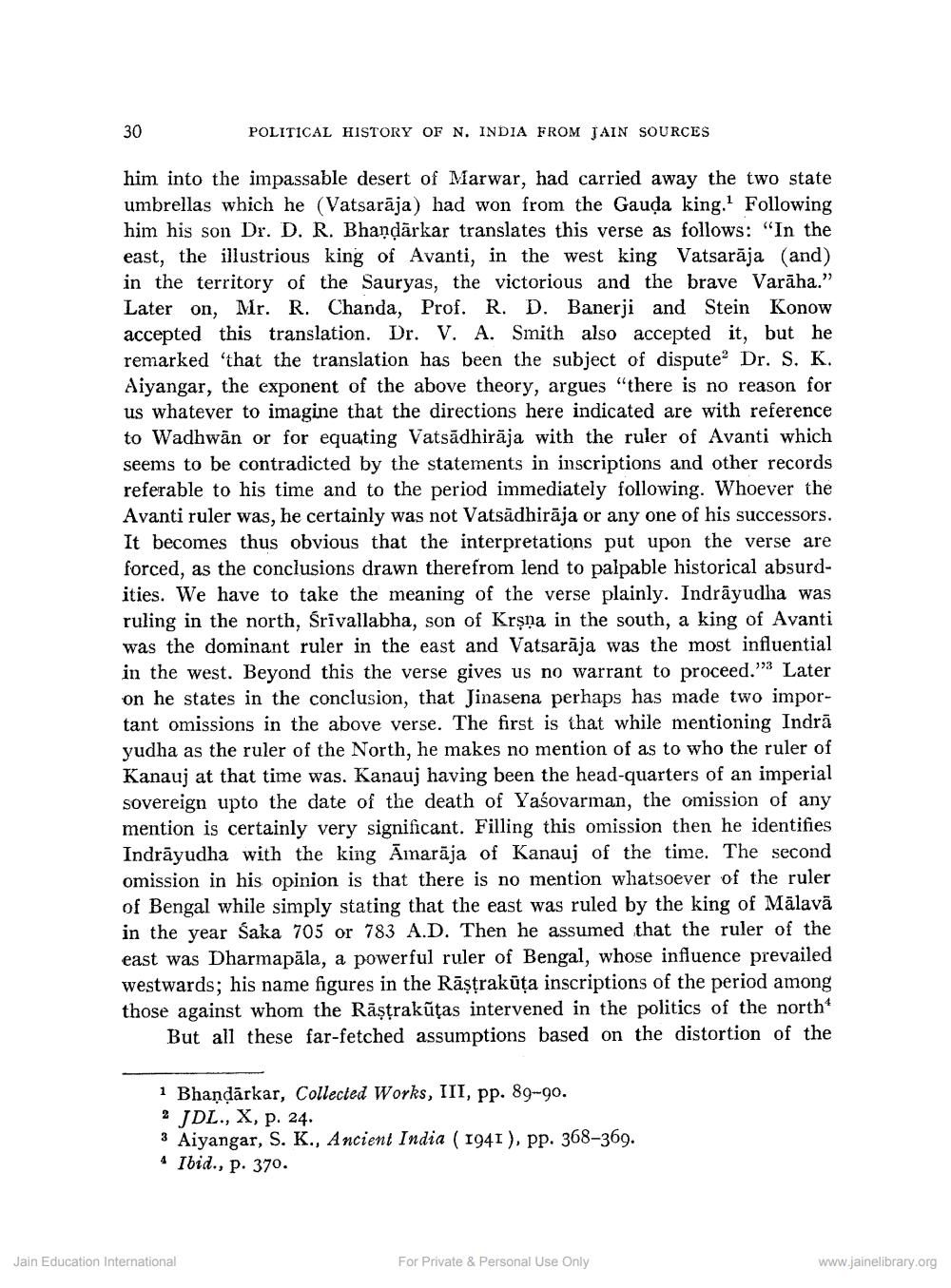________________
POLITICAL HISTORY OF N. INDIA FROM JAIN SOURCES
him into the impassable desert of Marwar, had carried away the two state umbrellas which he (Vatsarāja) had won from the Gauda king. Following him his son Dr. D. R. Bhandārkar translates this verse as follows: "In the east, the illustrious king of Avanti, in the west king Vatsarāja (and) in the territory of the Sauryas, the victorious and the brave Varāha.” Later on, Mr. R. Chanda, Prof. R. D. Banerji and Stein Konow accepted this translation. Dr. V. A. Smith also accepted it, but he remarked that the translation has been the subject of disputea Dr. S. K. Aiyangar, the exponent of the above theory, argues “there is no reason for us whatever to imagine that the directions here indicated are with reference to Wadhwān or for equating Vatsādhiraja with the ruler of Avanti which seems to be contradicted by the statements in inscriptions and other records referable to his time and to the period immediately following. Whoever the Avanti ruler was, he certainly was not Vatsādhirāja or any one of his successors. It becomes thus obvious that the interpretations put upon the verse are forced, as the conclusions drawn therefrom lend to palpable historical absurdities. We have to take the meaning of the verse plainly. Indrāyudha was ruling in the north, Srivallabha, son of Krsna in the south, a king of Avanti was the dominant ruler in the east and Vatsarāja was the most influential in the west. Beyond this the verse gives us no warrant to proceed.”3 Later on he states in the conclusion, that Jinasena perhaps has made two important omissions in the above verse. The first is that while mentioning Indrā yudha as the ruler of the North, he makes no mention of as to who the ruler of Kanauj at that time was. Kanauj having been the head-quarters of an imperial sovereign upto the date of the death of Yaśovarman, the omission of any mention is certainly very significant. Filling this omission then he identifies Indrāyudha with the king Amarāja of Kanauj of the time. The second omission in his opinion is that there is no mention whatsoever of the ruler of Bengal while simply stating that the east was ruled by the king of Mālavā in the year Saka 705 or 783 A.D. Then he assumed that the ruler of the east was Dharmapala, a powerful ruler of Bengal, whose influence prevailed westwards; his name figures in the Rāstrakūța inscriptions of the period among those against whom the Răştrakūtas intervened in the politics of the north
But all these far-fetched assumptions based on the distortion of the
i Bhandārkar, Collected Works, III, pp. 89-90. 2 JDL., X, p. 24. 3 Aiyangar, S. K., Ancient India ( 1941 ), pp. 368-369. * Ibid., p. 370.
Jain Education International
For Private & Personal Use Only
www.jainelibrary.org




